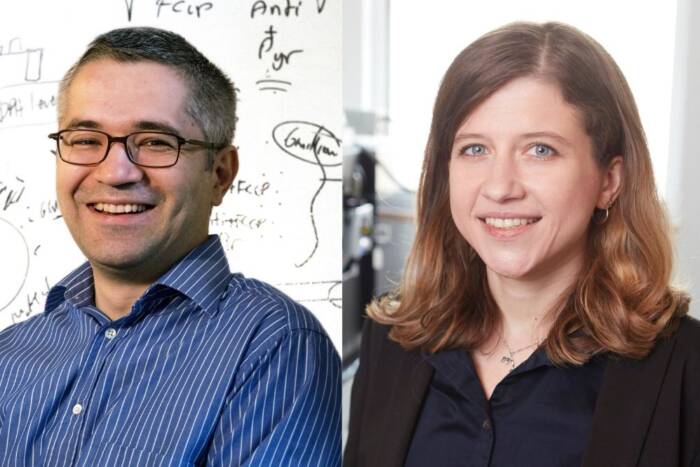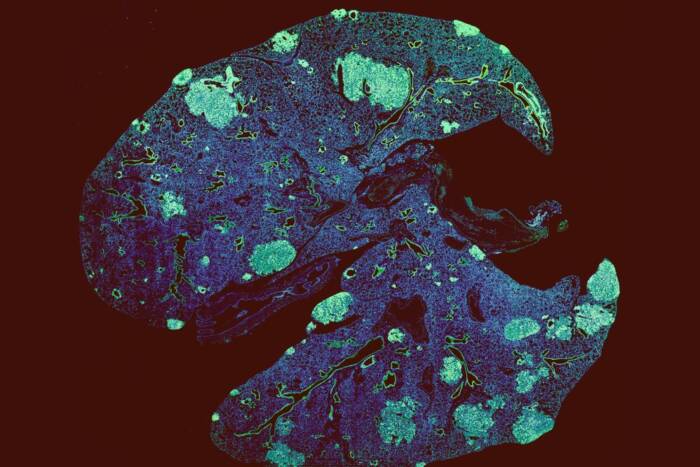The hospital turns 100
This year marks the 100th anniversary of The Rockefeller University Hospital, a unique institution that played a prominent role in biomedical discovery in the 20th century.
When the hospital opened its doors in 1910 it became the country’s first clinical research hospital. A hospital unlike any other United States institution at the time, it was devoted to clinical investigation and what is now called translational research, with bidirectional studies leading to new approaches to diagnosing, treating and preventing disease.
We take the link between science and medicine for granted today, but for nearly all of the 200,000 years of human life on earth we lived in a prescientific era. Our ancestors blindly grappled with disease as best they could, learning slowly by trial and error. By about the time the Rockefeller Hospital opened, they had succeeded in increasing life expectancy at birth by about 15 years, from 35 to just under 50 years of age. In striking contrast, in the last 100 years the systematic application of the scientific method to medicine has increased life expectancy to nearly 80 years, thus adding another 30 years of life. So while it took 200,000 years to gain 15 years of life in the mostly prescientific era, it took just 100 years of the current scientific era to achieve another 30.
A remarkable number of the discoveries that produced this amazing accomplishment were made at this very small institution. This is, of course, a testament to the brilliant scientists and physician-scientists who performed the pioneering research and helped to translate it into improved methods to prevent, diagnose and treat disease. But it is equally a testament to David Rockefeller and the other members of the Rockefeller family who literally created so many of the unique American models of philanthropy, as well as the university’s devoted supporters who honor the Rockefeller family’s legacy by creatively building on, and adapting, those models to our fast-changing world. Over the past year, they have given more than $34 million in support of the hospital and the university’s clinical and translational research program (see “Hospital centennial campaign raises over $34 million,” right).
In my view, what has made this institution so great for more than a century is the faculty and staff’s uncompromising commitment to excellence in every aspect of this institution. Our teams of investigators follow the scientific path no matter where it leads, and perform difficult, long term studies designed to address the most fundamental questions in biomedical science.
During the past year, we have celebrated the hospital’s faculty, staff, students, nurses, patients and donors — all of whom have made critical contributions to the success of this unique institution — with several successful events. Last February, we revealed a new plaque in the hospital celebrating the 1944 discovery by Avery, MacLeod and McCarty of DNA as the molecule of heredity. This April, we hosted a research nursing symposium to honor the hospital’s nursing staff. On October 7, we held a gala to honor the faculty and staff of the hospital, as well as our generous roster of donors who have made contributions to the hospital’s research over the years.
More than 350 people attended the event, including many of our trustees and benefactors as well as local officials and members of the press.
On October 18 we held a hospital staff appreciation event in Welch Hall, which was attended by many of the roughly 80 nurses, computer specialists, pharmacists, administrators and other personnel who keep the hospital running, as well as university faculty and staff who they work with. Finally, on October 29, we held a daylong scientific symposium to celebrate the ongoing research and collaborations currently under way at the hospital. Speakers included Eric Lander of the Broad Institute of MIT and Harvard, Donald Capra of the Oklahoma Medical Research Foundation, Daniel Rosenblum of the National Center for Research Resources at the National Institutes of Health, and Rockefeller’s own Jean-Laurent Casanova, Leslie Vosshall and Charles Rice.
In addition to these events, we have created a Web site (centennial.rucares.org) featuring vignettes of 100 of the most important scientific discoveries made at the hospital that have resulted in improved medical care. There’s also a 12-minute video that explores the hospital’s mission and features some of its current research.
The revolutionary idea on which the hospital was founded is as alive today as it was in 1910. More and more, both basic scientists and physician-scientists are exploring medical applications of their discoveries. In fact, currently a total of 25 laboratories are conducting human subject protocols, including many basic science laboratories. The hospital’s expert and dedicated staff provide a supportive infrastructure to ensure the safety of our research volunteers and the highest scientific quality of the studies; to facilitate the research of these gifted investigators; and to train the next generation of clinical research leaders. We now have three vibrant translational research educational programs: the Clinical Scholars master’s degree program for physician-scientists; the Certificate in Clinical and Translational Science program for basic scientists, postdocs and both Ph.D. and M.D.-Ph.D. students; and the new Transition to Scientific Independence program for K-awardees and other graduates of our Clinical Scholars program.
The centennial celebration has inspired us to rise to the challenges that still remain: bringing the medical benefits of science to all people worldwide; continuing to push the limits of human life expectancy; and ensuring that the extra years of life we have fought so hard to attain are vibrant ones, because they are lived in good health.
Hospital Centennial campaign raises over $34 million
A fundraising campaign launched in conjunction with the Rockefeller University Hospital centennial celebration has raised $34.6 million. The gifts, from 175 donors and ranging in size from a few thousand dollars to $10 million, will go to maintain clinical and patient-oriented research at the hospital and to support specific laboratories and research programs.
Twenty-three million dollars of the total was raised in six months leading up to a black-tie dinner held in celebration of the hospital’s centennial on October 7. Attended by 350 benefactors, friends
and faculty members of the university, the dinner dance included speeches by hospital leaders and the debut of a 12-minute film on the hospital’s history. “The materials produced for the centennial dinner, including the film and an essay by Professor Emeritus Jules Hirsch chronicling the hospital’s first 50 years, were designed to highlight the institution’s mission and accomplishments, and will continue to broaden public awareness of the hospital,” says Marnie Imhoff, vice president for development.
At the dinner, the university’s Board of Trustees presented the hospital’s physician-scientists and staff with an 1892 first edition of The Principles and Practice of Medicine, by Sir William Osler, a classic medical text which played a key role in the founding of the university and its hospital. The dinner also featured a proclamation presented by New York Mayor Michael Bloomberg declaring October 7, 2010 “The Rockefeller University Hospital Day in New York.”


